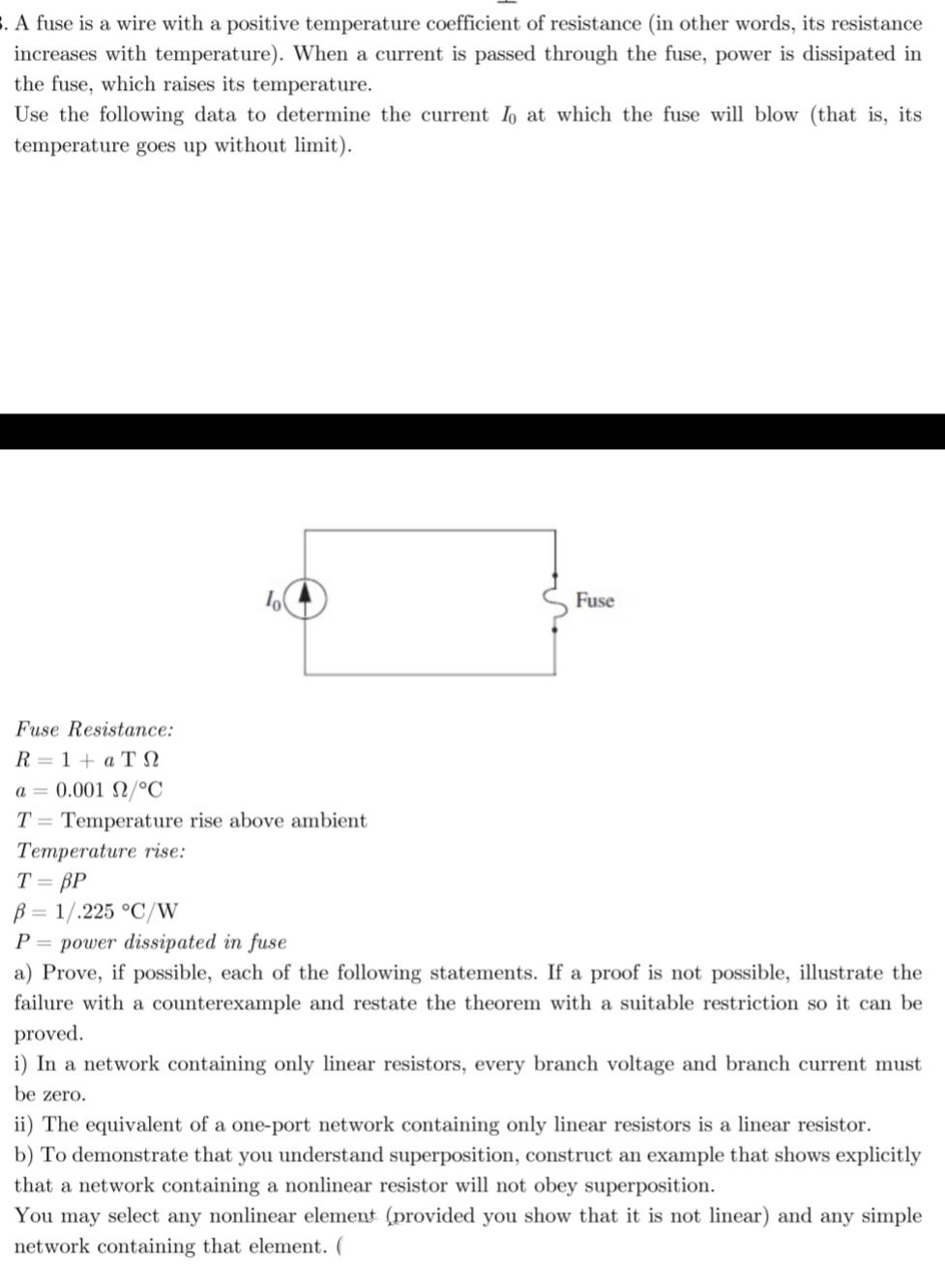Answered step by step
Verified Expert Solution
Question
1 Approved Answer
3. A fuse is a wire with a positive temperature coefficient of resistance (in other words, its resistance increases with temperature). When a current

3. A fuse is a wire with a positive temperature coefficient of resistance (in other words, its resistance increases with temperature). When a current is passed through the fuse, power is dissipated in the fuse, which raises its temperature. Use the following data to determine the current Io at which the fuse will blow (that is, its temperature goes up without limit). Fuse Fuse Resistance: R= 1+ a TO a 0.001 2/C T = Temperature rise above ambient Temperature rise: T = BP B= 1/.225 C/W P= power dissipated in fuse a) Prove, if possible, each of the following statements. If a proof is not possible, illustrate the failure with a counterexample and restate the theorem with a suitable restriction so it can be proved. i) In a network containing only linear resistors, every branch voltage and branch current must be zero. ii) The equivalent of a one-port network containing only linear resistors is a linear resistor. b) To demonstrate that you understand superposition, construct an example that shows explicitly that a network containing a nonlinear resistor will not obey superposition. You may select any nonlinear element (provided you show that it is not linear) and any simple network containing that element. (
Step by Step Solution
There are 3 Steps involved in it
Step: 1
of b fuse R 10CT nesistance lo00 R T PP 1...
Get Instant Access to Expert-Tailored Solutions
See step-by-step solutions with expert insights and AI powered tools for academic success
Step: 2

Step: 3

Ace Your Homework with AI
Get the answers you need in no time with our AI-driven, step-by-step assistance
Get Started


